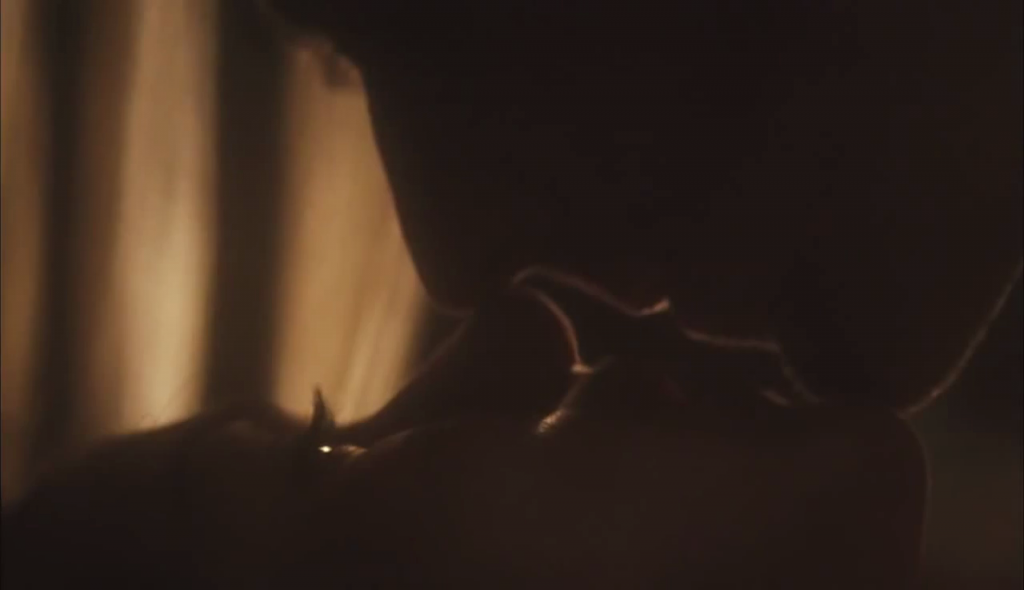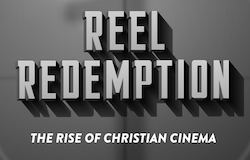On Sex, Marriage, and the Movies, by Esther O’Reilly
3 Jul
When it comes to sexuality in the movies, many conservative Christians tend to err on the side of extreme caution. Some might use a service like VidAngel to filter out sexual content, while others prefer to skip a given film/show entirely. Rather than making case-by-case judgment calls based on the extent or context of specific scenes, they simply cut the Gordian knot: If it has something sexual in it, it can’t be good, end of story.
As a rule of thumb, this certainly has merit. Few films were ever improved by adding a sexual scene. Pick one at random, and you can safely bet it will be heavy on indulgence, light on edification. Hollywood’s track record in this department does not impress, to say the least.
But already, I know there are some people who would be uncomfortable with my wording just there. “Few? What do you mean? Why not just say ‘no’?” If I say Hollywood gets sex wrong more often than not, some may ask, “What would it mean to get it right?”
That’s a fair question, to which I want to give a fair answer. Whether you, the reader, are a Christian or an atheist, a conservative or a liberal, I hope you’ll find my answer enlightening. I’ll begin with three questions. Then, if you’re still with me, I’ll close with three examples.
When I approach sexual content in a film, there are three questions I ask, three things I want to know:
- What is the content being shown?
- Who is engaging in it?
- Why is it there?
There’s a reason question one is question one. Some things are simply prohibitive, no matter what the context. Sadly, too many films have gotten away with pornography in the guise of art. When literally nothing is left to the imagination, there’s no point in calling it anything else. And even scenes that stop short of explicit nudity can go beyond what actors may appropriately be asked to do.
Viewers must decide for themselves where to draw their personal line in the sand. I can’t draw that line for you, and you can’t draw it for me. But wherever you ultimately choose to draw it, you should have one, and you should stick to it.
Once I have answered the “what,” I’m interested in the “who,” which will lead directly into the “why.” In Paul Simon language, “What is the point of this story? What information pertains?” If a filmmaker wants to include sexuality, I want to know why I, the viewer, should care. While I hardly expect mainstream Hollywood to align with a Christian sexual ethic, even secular filmmakers are capable of making sex serve a story, not the other way around. Where that story goes hinges on whether they view the characters involved as people or props.
(Note: While rape or sexual abuse are categories of sexual content that can serve a story, they’re orthogonal to what I want to discuss here, so I will set them aside for purposes of this article.)
So, here’s the first “who” question: Is it a man and a woman? If the answer is “no,” we’re already in problematic territory. There’s no redemption to be salvaged from a scene of two kids fooling around with something they don’t understand, unless a) the content is minimal, and b) the film is explicitly written to explore the consequences of their actions in a thoughtful way. Such a film is a rare bird. The only good example I’ve seen is To Save a Life, which shows a tastefully silhouetted moment of intimacy between two high-schoolers, then later focuses on how they deal with the baby that results.
Of course, the answer could also be “no” if the participants are of the same gender. I have very decided opinions on this point, but since they would take a long time to unpack in detail, I will simply say that I oppose any scene which distorts the natural order of sex and romance. (This includes the implication of unnatural acts performed between heterosexuals as well, by the way.) Moreover, if I use the words “married” or “unmarried,” you may assume that I’m limiting them to the only context in which I believe such words have any meaning.
So, let’s say it’s a man and a woman. Next question: Are they married? It is a fact that the vast majority of on-screen lovemaking occurs between people who are not. Once again, my attitude towards such scenes will partly depend on what the filmmakers want me to take away from them. Are promiscuity and “shacking up” handled with some modicum of honesty about their emotional fallout? Or are they treated as punchlines? In other words, if you’re going to have that scene, you should have this scene too (note: language).
That may not make the first scene appropriate (see question one), but at least it places it in a human context, and that’s worth something.
Let’s sharpen the question: Are they married to each other? Adultery seems to be one of the few things most people still agree is objectively wrong, but it’s been dressed up as an erotically charged “naughty pleasure” in far too many flicks. They don’t redeem themselves by making the guilty party “pay” either. Sensationalist revenge fantasies are void of compassion or true insight into human nature. They are worth no viewer’s time, least of all the Christian viewer.
However, there can be a right way to handle adultery. Adulterous sex could be framed as thrillingly erotic, or it could be framed as cheap, ill-gotten, and corrupting. One of the films I’m going to spotlight at the end of this article, The Painted Veil, actually contains three different sexual scenes. One of them occurs between a man and a woman who are both cheating on their spouses in the woman’s bedroom. They’re interrupted in flagrante by the turning of the handle, as her husband has arrived home unexpectedly. As they hold their breath, he changes his mind and leaves without entering, and they proceed to put their clothes back on. Of course, the husband knows, and the rest of the film focuses on the damage his wife’s sin has caused. Adapted from W. Somerset Maugham’s novel, the story is decidedly pro-marriage, moving the audience to hope for reconciliation between a husband and wife who are, by contemporary standards, hopelessly incompatible.
This leads to my final category: marital sex, aka the only way we can “get sex right” in real life. My evaluation of any other kind of sexual activity in film is contingent on whether the surrounding story is sufficiently negative about it. But here, at last, is that one category where such a scene can be evaluated positively. And yet, even here, one should not lose sight of that ever-nagging question one.
This is best demonstrated by example. Herewith, I offer three.
Scene 1: Regarding Henry
This is the best and most understated of my three examples. It’s not a sex scene, though it contains mature content. However, it’s “mature” in more ways than one. Yes, it hints at things viewers below a certain age don’t need to be thinking about yet, but it’s also profoundly thoughtful.
The premise is that the man (Harrison Ford) is recovering from a gunshot wound that erased his old personality/memories. Formerly an unpleasant, workaholic lawyer, he’s now rediscovering his life and family through almost childlike eyes. In this scene, his wife (Annette Bening) helps him rediscover sexuality. At the moment, his knowledge is limited to what he unfortunately picked up by accidentally wandering into a porn theater. It’s left him confused and unsure what to expect, or what is expected of him. Fortunately, he’s in very safe, gentle hands. I love everything about the way this scene is shot and written. I love how discreetly the camera allows you to infer what’s happening without showing more than necessary. I love how little she says, and how little she needs to say. This is a scene that understands what sexuality fundamentally is: a selfless, unconditional surrender of the self, to that one person with whom you are joined for life.
Scene 2: The Painted Veil
After Kitty Fane (Naomi Watts) cheats on her husband, Doctor Walter Fane (Edward Norton), he plunges into his work. In this case, “plunging into his work” means traveling to plague-ridden China and bringing Kitty with. Not that he didn’t give her a choice: It was come with or go through an unpleasant divorce where Walter would not be shy about placing the public blame. So, plague-ridden China it was. (Hey, those were different times.)
To appreciate this scene fully, one must understand that this is a story about a bad marriage. It was a too-hasty marriage, a marriage that was doomed from the beginning, between a stolid nice guy and a complete flake who didn’t deserve him. The first hour and a half has been a series of thorny, believably drawn confrontations, defined by all the pent-up bitterness that unforgiven sin begets. The lonely crucible of the epidemic has brought out their best, but true to human nature, it’s also brought out their worst.
Yet, bit by bit, a subtle thawing process has begun. Before this scene, another pivotal moment has occurred earlier in the day, when Kitty found herself in the wrong place at the wrong time and got backed into a corner by a mob. Armed with nothing but chutzpah, the slim, dweeby Walter leaped forward to push them back for a few queasy moments until their manservant arrived with a gun. Curiously, Walter and Kitty never speak about this moment. The viewer understands that it matters without dialogue to drive the point home. And that night, they see each other as it were for the first time. Finally, they are able to make love, in every sense of the word. Granted, they’ve just been unwinding with opium, which combined with the day’s frightfully close shave has given them a physical high. But their long-denied lovemaking clearly signifies the forging of a much deeper bond. In context, it invites us to see sex as it should be seen: as a hard-won, sacred thing. At the same time, it’s shot in a tasteful way, using close-ups and dim lighting to suggest the scene while letting us fill in the gaps.
(For those who are interested, the full film is available for free on YouTube right now, but if it’s been removed by the time of posting, or if you just don’t have two hours to kill, I captured some of its best moments in this mashup.)
Scene 3: The Fountain
I have affectionately called The Fountain “a mess of mythical proportions.” The writing is clunky, the acting is uneven, and the plot is over-ambitious to the point of being preposterous. But it holds a strange fascination for me. Somehow, through all the cringey dialogue, wibbly-wobbly timelines and New Age mumbo-jumbo, this film still brings out the helpless grief of losing your soulmate in startlingly intimate ways.
One of the most affecting moments occurs early in the film, when Tommy, the husband (Hugh Jackman), first discovers that his wife’s brain cancer has robbed her of sensitivity to hot and cold. He’s found her outside, obliviously barefoot in the snow, and brought her in for a sponge bath. But the truth doesn’t sink in until she asks him to heat the already hot sponge. In their fear and helplessness, all they can do is cling to each other. A glimmer of her old self comes through the tears, as she pulls him into the bath and they begin to make love.
This scene has many undeniably good things going for it. It certainly can’t be accused of treating sex cheaply. Their shared grief in her illness lends it legitimate emotional weight, serving as a potent reminder of how love carries us through our weakest moments. Before she initiates, he leans over her and simply says “I’m here. I will always be here.” On paper, it’s a beautiful representation of the marriage covenant. And there’s the rub: It’s not on paper. It’s a scene played out between two living, breathing actors. And I’m comfortable saying that as such, it should not have been filmed the way it was. Yes, the wife is strategically covered by bubbles, and yes, the camera pulls away and closes its eyes before the scene crosses into officially R-rated territory. Still, it pushes the envelope more aggressively than either of the other two examples here. The result is a scene that still has power, but not as much as it could have had.
In closing, let me reiterate that I do not judge Christians who take the “Gordian knot” approach described at the very beginning of this piece. It’s not my goal to pressure more conservative readers into agreeing with me. I fully admit that portraying sexuality in film is like walking a tightrope. As I think this third example demonstrates, the window where it can be done appropriately is very small.
Nevertheless, I still believe such a window does exist. And in that space, I’ve come to conclude that it’s possible even for non-Christian Hollywood artists to portray something not merely tolerable, but beautiful. For them, sex may be a gift only half understood. They may not perceive the deeper magic that it signifies. But they can still reach towards it.




No comments yet